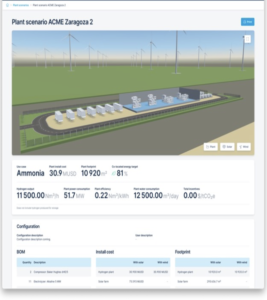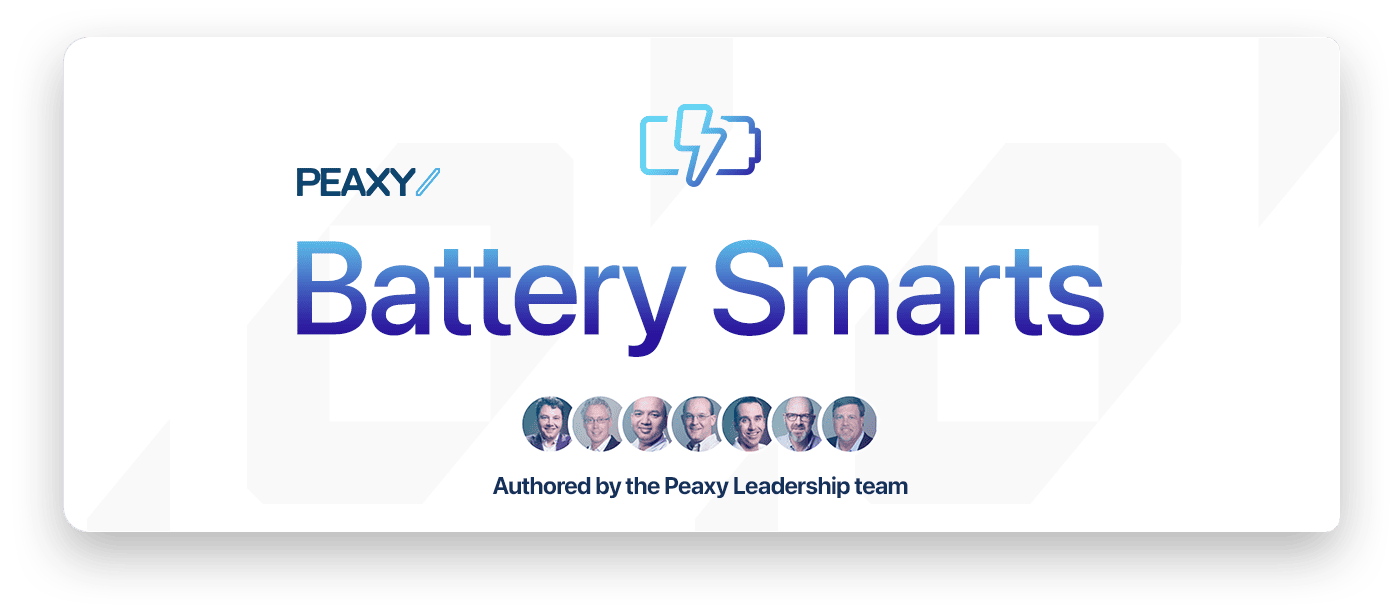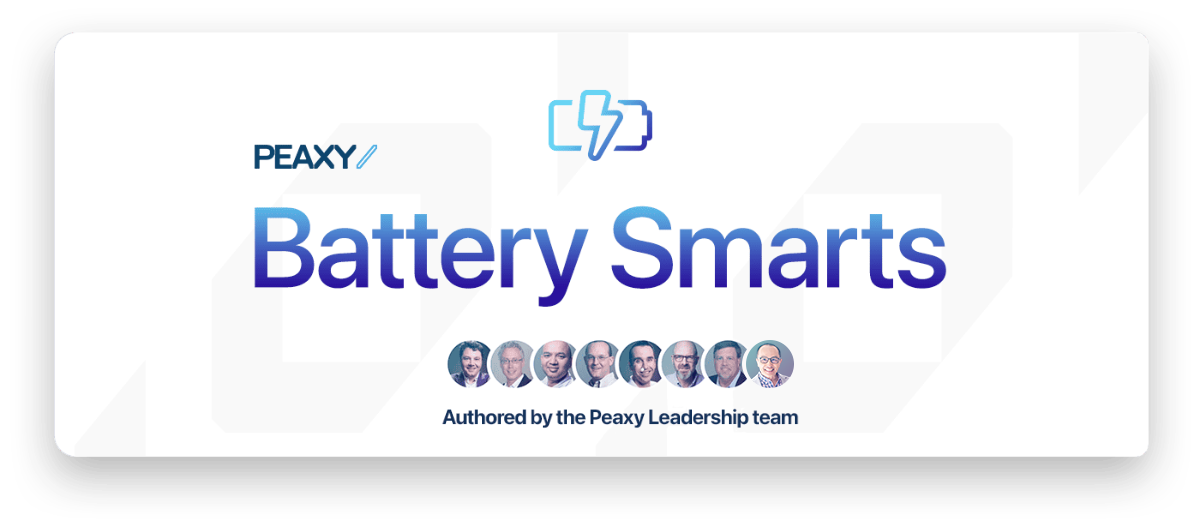Editor’s Note: Peaxy recently announced an exciting development in digital twins for the energy industry, specifically for hydrogen power plants, in partnership with Baker Hughes. Please see “Peaxy’s Most Recent Experience with Digital Twins” below for details.
Digital twins have emerged as a transformative technology across various industries, providing a virtual replica of physical objects or systems to simulate their real-world counterparts. Initially conceptualized in the early 2000s, digital twins have evolved significantly with advancements in IoT, AI, and data analytics. Today, they are used in diverse applications such as sales, manufacturing, healthcare, aerospace, and energy.
In sales, digital twins enable the complex optimization of a system to meet customer requirements. In manufacturing, digital twins enable predictive maintenance and process optimization, reducing downtime and improving efficiency. In healthcare, they assist in personalized medicine by simulating patient-specific models for better diagnosis and treatment planning. The aerospace industry leverages digital twins for aircraft design and maintenance, enhancing safety and performance. These practical applications demonstrate the versatility and potential of digital twins to revolutionize various sectors by providing real-time insights and predictive capabilities.
Not surprisingly, digital twins are transforming the battery analytics landscape, offering unprecedented insights and optimization capabilities. By creating a virtual replica of a physical battery or battery energy storage system (BESS), digital twins enable plant design optimization, and real-time monitoring, predictive maintenance, and performance optimization. This article explores the practical applications of digital twins in battery analytics, highlighting their potential to revolutionize battery management systems.
What Are Digital Twins?
A digital twin is a virtual representation of a physical object or system, designed to simulate its real-world counterpart in real-time. In the context of battery analytics, a digital twin mirrors the state and behavior of an actual battery cell to a BESS fleet by continuously collecting and analyzing data from embedded sensors and alarms. These sensors typically include voltage, current, and temperature, as well as impedance measurements and strain gauges.
Real-Time Monitoring and Diagnostics
One of the primary benefits of digital twins is their ability to provide real-time monitoring and diagnostics. By continuously collecting data from sensors embedded in the physical battery and BESS, the digital twin can mirror the state and behavior. This allows for immediate detection of anomalies, such as unexpected temperature rises or voltage drops, enabling swift corrective actions to prevent potential failures.
Battery safety is a critical concern, especially in applications like electric vehicles (EVs) and grid energy storage. Digital twins can significantly enhance battery safety by providing early warnings of potential safety issues. For example, digital twins can detect signs of thermal runaway—a dangerous condition where a battery cell overheats and can potentially catch fire. By monitoring temperature and voltage data in real-time, digital twins can identify abnormal patterns that precede thermal runaway, allowing for preventive measures to be taken before a critical failure occurs. Additionally, digital twins can simulate various stress scenarios to test battery safety under different conditions, ensuring that batteries meet stringent safety standards before deployment 1.
In electric vehicles (EVs), real-time monitoring systems can detect anomalies that could indicate potential issues such as cell imbalance or thermal runaway. The same capabilities also come into use in monitoring large-scale energy storage systems. Digital twin solutions that are part of a battery analytics solution like Peaxy Lifecycle IntelligenceTM utilize advanced data-centric AI platforms to provide comprehensive real-time analytics on battery performance, helping to prevent sudden breakdowns and ensure 100% uptime.
Predictive Maintenance and Performance Optimization
Digital twins also play a crucial role in predictive maintenance and performance optimization. By leveraging real-time data from sensors, digital twins can compute key metrics such as state of charge (SoC), state of health (SoH), state of power (SoP), and round trip efficiency (RTE). This enables intelligent fault diagnostics and performance optimization, enhancing the reliability of batteries in applications like grid energy storage and electric transportation.
For example, Siemens’ Virtual Power Plant (VPP) uses digital twins to optimize the performance and management of distributed energy resources, ensuring efficient energy distribution and storage. In Germany, a VPP project that aggregates the capacity of nine hydroelectric plants has a total VPP capacity of 8.6 MW. Similarly, the Fraunhofer Institute for Manufacturing Engineering and Automation has developed digital twins for battery cells to improve performance estimation and behavioral predictions.
The Institute’s MOEE (Maximize Overall Equipment Effectiveness) software tool is designed to detect production losses in complex, interconnected, automated equipment by analyzing three key parameters: performance, quality, and availability 2. MOEE uses advanced algorithms to automatically analyze equipment behavior and create individual process models. These models help identify inefficiencies and disruptions in production cycles. For instance, the software can detect brief pauses in robot operations that are typically hard to quantify but can accumulate and lead to significant errors. By identifying these inefficiencies, MOEE enables quick resolution of disruptions, ultimately improving overall equipment effectiveness (OEE).
In the battery energy industry, augmenting a lithium-ion BESS site is essential to meet contractual commitments especially with power purchase agreements (PPA), but results in significant capital expense (CAPEX). Improving the accuracy of SOH degradation based on actual operating performance avoids missing PPA contractual commitments and committing to CAPEX either too early or late. A digital twin improves SOH forecasting by calculating a daily SOH independent of the BMS based on each batteries’ degradation and equivalent cycles. Industry and OEM degradation forecasts and site specific cell performance are ingested via data pipelines. Machine learning will adjust the degradation forecast based on actual stressful operations including high C-rates, calendar aging, temperature variations, cycles per day, etc. In addition, degradation forecasts can be created for new use cases leveraging the machine learning algorithms. Operational improvements can also be identified to extend the equivalent cycle life of the battery.
Digital twins can also be used to improve customer collaboration by optimizing designs to meet customer priorities including life cycle cost of storage (LCOS) and power purchase requirements for site specific conditions. After the optimized design is selected a proposal can be generated in a day instead of weeks.
Peaxy’s Most Recent Experience with Digital Twins
Peaxy has long been at the forefront of digital twin innovation. The company pioneered the first combined cycle power plant digital twin and the first set of digital twins for complex shipboard systems for the US Navy. These achievements underscore our expertise in creating high-fidelity models that simulate real-world conditions and optimize performance across various industries.
Recently, Peaxy introduced a new digital twin capability for hydrogen power plants with Baker Hughes. This innovation enables comprehensive modeling and simulation of integrated renewable hydrogen plants, facilitating optimized design, enhanced operational efficiency, and accelerated project execution. The solution ingests data such as budgetary proposals, 3D CAD geometries, various physics and other complex models and business KPI’s, allows extensive configuration modeling, and produces plant proposals with 3D augmented reality walk-throughs in under an hour. The solution can also dynamically generate key insights, including Levelized Cost of Hydrogen (LCOH), providing critical insights for optimizing hydrogen production costs.

Peaxy’s new Hydrogen Digital Twin solution is an example of how the latest technology can be applied within the energy industry to drive optimization, efficiency and safety. The solution is used to optimize plant design, enhance operational efficiency, and accelerate project execution with dynamically generated 3D plant layouts, quickly and by clients without a technical background.
Measurable Results and Future Potential
The implementation of digital twins in battery analytics has already yielded measurable results. Real-time diagnostics provided by digital twins have been shown to reduce the risk of battery failure and extend the overall lifespan of batteries. A study on digital twins for lithium-ion battery health monitoring highlights how integrating real-time data with predictive models can enhance battery life and reliability 3. Additionally, the development of cloud-based digital twins for high-voltage battery systems has demonstrated improvements in battery management and longevity through continuous monitoring and advanced diagnostics 4.
As digital twin technology continues to evolve, its potential applications in battery analytics are vast. From improving the design and performance of EV batteries to optimizing grid energy storage systems, digital twins are set to play a pivotal role in the future of energy management.
3 Digital Twins for Lithium-Ion Battery Health Monitoring with Linked …
4 Cloud Based Digital Twin Development for High-Voltage Battery Systems …

